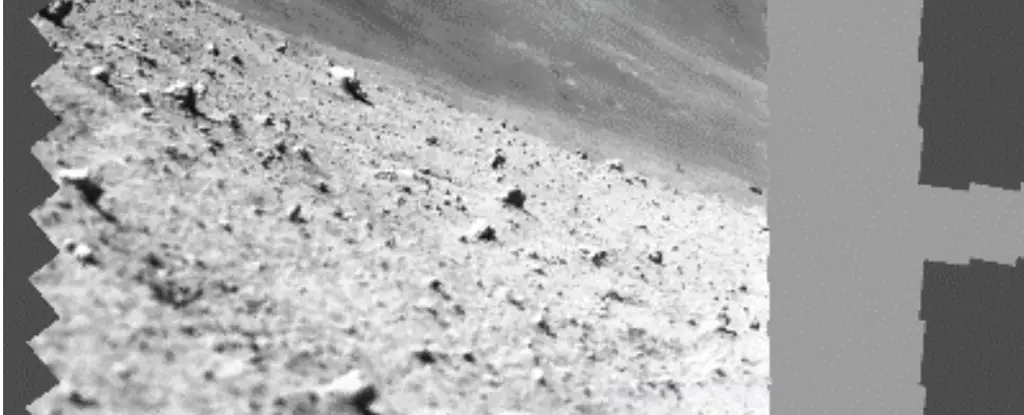Japan’s Moon lander, known as the Smart Lander for Investigating Moon (SLIM), has recently sent back its first images of the lunar surface. Despite the stunning and detailed photographs captured by the on board Multi-Band Camera (MBC), the situation seems bittersweet as SLIM is currently stuck upside down on the Moon. The Japan Aerospace Exploration Agency (JAXA) made the difficult decision to switch off the lander to conserve power, with hopes that it can be reactivated if sunlight reaches its solar panels in the future. While the state of SLIM remains uncertain, the images it captured before shutdown provide valuable insights into the lunar surface.
SLIM landed on its nose, causing a crucial problem: its solar panels were unable to generate power. Within just three hours of landing, JAXA made the tough call to turn off the lander in order to save power. This decision enables SLIM to potentially restart operations once sunlight reaches its solar panels. However, until then, the Moon Sniper remains motionless, awaiting the possibility of a new lease on life. Despite this setback, SLIM managed to capture important data during its brief operational period.
During the limited time it was operational, SLIM’s Multi-Band Camera (MBC) snapped 257 monochrome, low-resolution photographs of the lunar surface. These images, although incomplete due to the camera’s scanning issue, showcase the Moon’s gray, rubble-covered landscape in incredible detail. The agency has since zoomed in on these photographs and has begun identifying and giving playful and adorable dog-themed nicknames to rocks of interest, such as SHIBAINU and Toy Poodle. In addition to these fascinating images, the MBC also captured a snapshot of SLIM itself in its unfortunate nose-down position.
While SLIM’s situation is uncertain, there is some good news. The lander’s two payloads, LEV-1 and LEV-2, were successfully deployed and have been roaming the Moon’s surface independently. LEV-2, a shape-shifting rover partially developed by a toy company known for Transformers, has generated excitement among the team involved in the project. JAXA project manager Shinichiro Sakai expressed his amazement upon seeing the image taken by LEV-2: “Something we designed traveled all the way to the Moon and took that snapshot. I almost fell down when I saw it.” This successful deployment demonstrates JAXA’s ability to land precisely on the intended location and opens up new possibilities for future lunar exploration.
As of now, the future of SLIM remains uncertain. JAXA’s hope lies in the possibility of sunlight hitting SLIM’s solar panels again, allowing the lander to power back up. If this happens, the mission will resume and carry out spectroscopic analysis to identify the chemical composition of the lunar surface. However, until that moment arrives, SLIM will remain idle on the slope of the Moon’s Shioli crater.
Japan’s Moon lander, SLIM, has faced numerous challenges, from landing on its nose to being unable to generate power. Despite these setbacks, the mission has been a success in terms of capturing stunning images of the lunar landscape and successfully deploying its rovers. The valuable data collected can provide valuable insights into the Moon’s surface. As we await the possibility of SLIM springing back to life, scientists and enthusiasts alike remain hopeful for the continuation of this groundbreaking mission and the doors it opens for future lunar exploration.


Leave a Reply